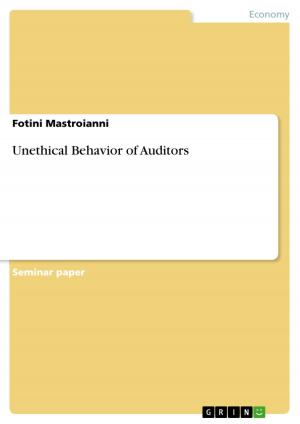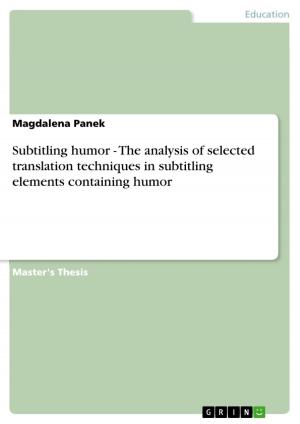Assessing the young Learners' Progress: Tests
Nonfiction, Reference & Language, Study Aids, ESL, Foreign Languages| Author: | Nicole Hahn | ISBN: | 9783638548229 |
| Publisher: | GRIN Publishing | Publication: | September 24, 2006 |
| Imprint: | GRIN Publishing | Language: | English |
| Author: | Nicole Hahn |
| ISBN: | 9783638548229 |
| Publisher: | GRIN Publishing |
| Publication: | September 24, 2006 |
| Imprint: | GRIN Publishing |
| Language: | English |
Seminar paper from the year 2005 in the subject English - Pedagogy, Didactics, Literature Studies, grade: 2,0, University of Wuppertal, course: Teaching English to very young children, 10 entries in the bibliography, language: English, abstract: In 1999, Rea-Dickens and Rixon conducted a survey about the relationship between assessment and learning. 120 European teachers and teacher trainers were asked if the main purpose of their assessment was to help their teaching, and 97% answered in the affirmative. Rea-Dickens and Rixon examined afterwards what the teachers really assessed and how they did so. They found a strong 'mismatch between curricular aims, pedagogy and test content' (Cameron, Lynne.Teaching languages to very young learners. Cambridge University press.2001. page 217). The assessment focused mainly on the children's achievements but neglected on other curricular aims such as language and social awareness. The assessment of young learners should serve teaching by providing feedback on the children's learning progress, so that the content and the difficulty of subsequent teaching units can be effectively adjusted to the learners' needs. This paper offers the reader an overview about the theoretical ideas and principles which should be kept in mind when implementing an assessment. Furthermore the guidelines of lower Saxony are introduced. They illustrate the expectations of the German school system towards assessment in class. Afterwards the paper gives an overview about psycholinguistic tests such as 'Blitztest' and 'F-Test'. Additionally, the paper answers the question of origin and purpose of the Cambridge Young Learners Test. Finally, material which should support the teacher in the efficiency assessment of the pupils is represented, considering the example of 'Ginger'.
Seminar paper from the year 2005 in the subject English - Pedagogy, Didactics, Literature Studies, grade: 2,0, University of Wuppertal, course: Teaching English to very young children, 10 entries in the bibliography, language: English, abstract: In 1999, Rea-Dickens and Rixon conducted a survey about the relationship between assessment and learning. 120 European teachers and teacher trainers were asked if the main purpose of their assessment was to help their teaching, and 97% answered in the affirmative. Rea-Dickens and Rixon examined afterwards what the teachers really assessed and how they did so. They found a strong 'mismatch between curricular aims, pedagogy and test content' (Cameron, Lynne.Teaching languages to very young learners. Cambridge University press.2001. page 217). The assessment focused mainly on the children's achievements but neglected on other curricular aims such as language and social awareness. The assessment of young learners should serve teaching by providing feedback on the children's learning progress, so that the content and the difficulty of subsequent teaching units can be effectively adjusted to the learners' needs. This paper offers the reader an overview about the theoretical ideas and principles which should be kept in mind when implementing an assessment. Furthermore the guidelines of lower Saxony are introduced. They illustrate the expectations of the German school system towards assessment in class. Afterwards the paper gives an overview about psycholinguistic tests such as 'Blitztest' and 'F-Test'. Additionally, the paper answers the question of origin and purpose of the Cambridge Young Learners Test. Finally, material which should support the teacher in the efficiency assessment of the pupils is represented, considering the example of 'Ginger'.















